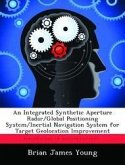The high accuracy of the Global Positioning System allows for precision navigation in support of current and future military operations. However, generating a three-dimensional position using GPS requires a clear line-of-sight between the user and at least four GPS satellites, and so the GPS service can be denied in scenarios such as a street surrounded by tall buildings. Therefore, there is a need for augmentation in these environments. Pseudolites, which transmit GPS-like ranging signals, can be deployed in order to improve the geometry and provide additional ranging signals. Users can then receive and process both GPS and pseudolite signals simultaneously with slight software modifications. In this thesis, in order to provide precise positioning in an urban environment, a conceptual design of the airborne pseudolite augmentation system is introduced. The impact of the restricted satellite availability due to obstructions is examined for various urban terrain zones. Then the ability of the pseudolite to improve both availability and accuracy is investigated. A comparison between the performances of a GPS only system and an airborne pseudolite augmented system is presented for various positioning scenarios. Simulations show that required accuracy and availability can be obtained by using an appropriately equipped airborne pseudolite. Finally, the improvement gained by the addition of second pseudolite to the most challenging urban environments is examined.








